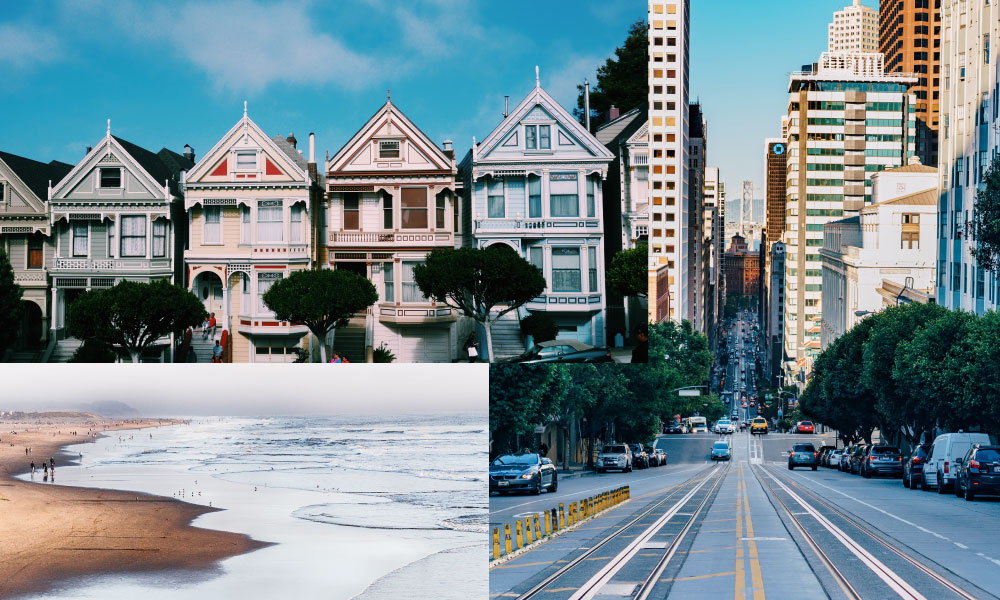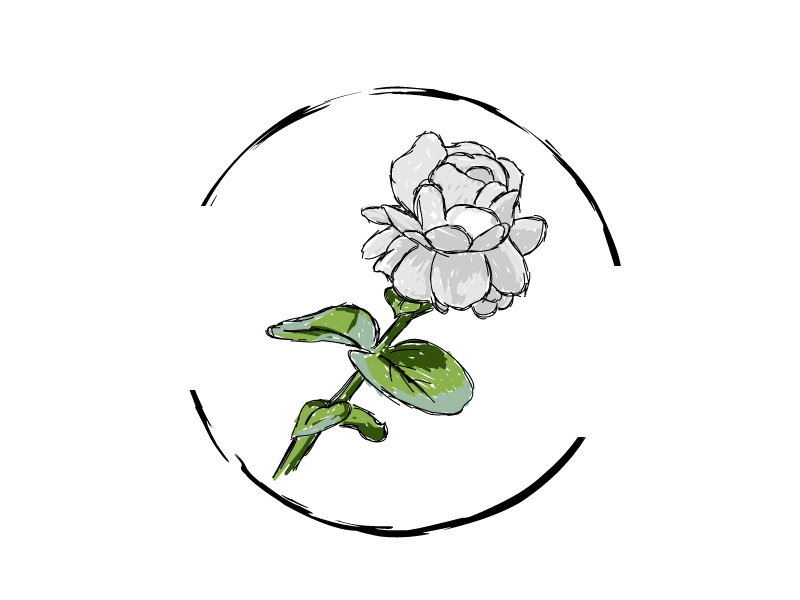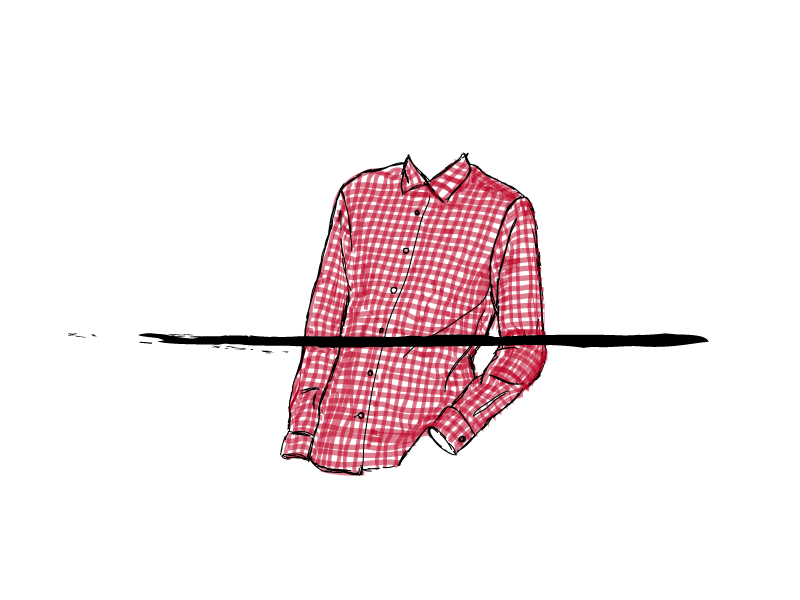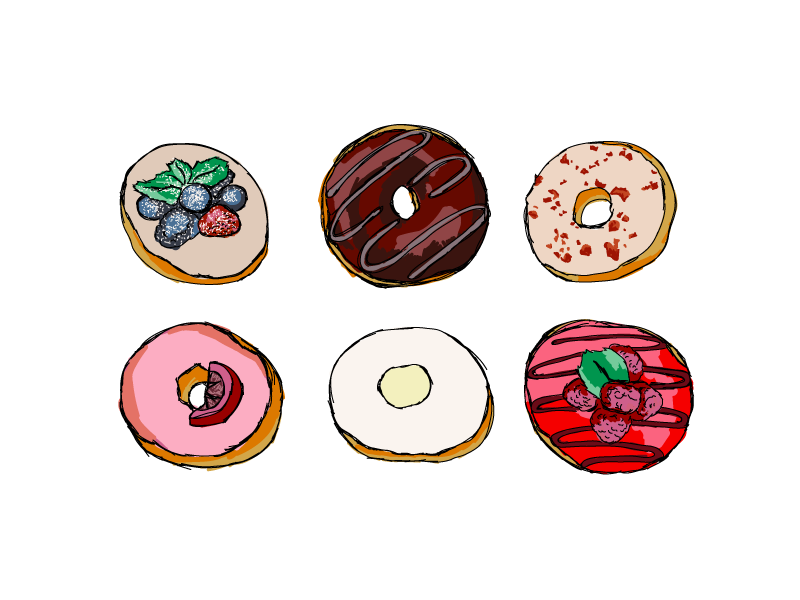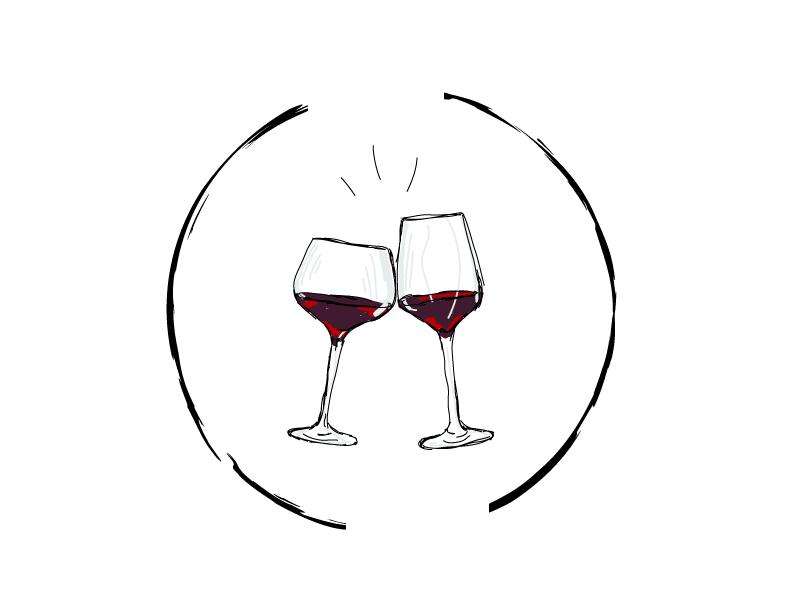In late January in California, in the East Bay, the fences along the streets that I walk are sporadically punctuated with blooming jasmine. The scent is sweet but not heady: a spring scent, reminding me of forsythia, or of the mock-oranges — Philadelphus lewisii, discovered by (and named for) the voyageur Meriwether Lewis in some ditch of eastern Oregon. It’s pleasant, muted yet pervasive, calm. The fences they adorn, however, are anything but subtle. Some are made of board, rough and unpainted, just barely standing, aided by wire or many, many appended nails. Others are bare chain-link, the galvanized wire mesh epitomizing a no-nonsense, function-before-status period of this bungalow-belt neighborhood in Oakland.
This is not atypical. Flowers in January, brilliant sunlight, a sense that you can walk down the street wearing a t-shirt almost any day of the year and not be cold beyond reason. Nor, for that matter, will you be stared at for having made a social or fashion faux pas. Just as the ramshackle wood fence and the no-nonsense mesh fence still stand unremarked upon, taste in clothes is equally unseen. Cars come and go on the street. Drivers hold up hands against the setting sun or flip down sunshades, and all is the same, though one may drive a new BMW, and one a 1980s Toyota Corolla. Though one may wear Gucci and Prada or Tom Ford and another Hanes and Goodwill. And critically, there will be no correlation. Mr. Hanes may be in a Porsche Carrera, and Mr. Ford might be behind the wheel of a Honda Accord.
This is not egalitarianism, though it may seem such. It is, perhaps, a masquerade of it, a Carnevale of hoi polloi mixing with the pretend old-money parvenu like one gigantic Freemason meeting on wheels. But unlike a Venetian pre-Lent fête, this is less about disguise than it is about a kind of social amnesia. Old money in America, and especially in California, doesn’t really exist; it’s all a case of studied mimicry for forms that were neither native nor relevant to the New World. Joan Didion, writing in 1977 about the success of the gauche Getty museum, was equally perplexed. “I have never been sure what the word ‘nouveau’ can possibly mean in America,” wrote Didion, “implying as it does that the speaker is gazing down six hundred years of rolled lawns.” There are no aristocrats here, no Ancien Régime. There are plenty of pretenders, all copies of copies of copies, but no genuine article. Driving a $100,000 German import does not demarcate social status, merely a good payday, and one that might have been shockingly fleeting, too. Driving a sensible car? Sensibility may be the cornerstone of the driver’s million-dollar-plus dividend income. Appearances are everything, but appearances are shallow and everyone — even the play-actor, even the audience — knows it. And so appearances become but a game that one is only casually engaged in. You cannot tell, from what a person drives or what a person wears, if someone works on an elite government contract at the Lawrence Berkeley National Lab, or teaches for Laney Community College; owns five strip malls along International Boulevard, or works as a mechanic on San Pablo Avenue.
The situation is no less extreme on the other side of the bay, where San Francisco has become a weird hybrid of movie set, tourist trap, domesticated slum, and American Riviera. Yet I have been served with great cordiality at the finest of restaurants at the top of Nob Hill — an insider’s place, an institution of the “old money” — even though I was wearing only a white t-shirt and my brow was covered in the sweat of a walk up the high hill. I have lunched among the tech-set of the “SoMa” — and it is so cute how often developers and urbanists think that a naming homage to Soho is original — and seen the vast throngs of blue jeans, Sketchers skating shoes, and button-down plaid shirts. Their lunch discussions: app timetables, stock options, IPOs. SoMa is where I first saw a sea of gingham check shirts. A year later, Howie Long was wearing one as a dress shirt with a three-piece suit while providing commentary for Fox’s NFL coverage. It made me want to burn any gingham I owned.
When there is no order to appearances, even playing the game of appearances begins to wane a little, as the hollowness of it crashes up against the pressures of the economy. So it is in my neighborhood, on the border of Oakland and Berkeley. Bungalows lovingly restored, their redwood shingles re-stained and their front gardens expertly landscaped with birds-of-paradise and euphorbia and Siberian iris sit cheek-by-jowl with houses whose paint has peeled a decade back, whose yards are crabgrass spotted with dog piss stains, whose porches are bleached and unpeopled. Yet like the clothing, like the cars, these cannot be taken as any indicator of social class, status, employment, race, religion, or any anything at all. Appearance now floats free from meaning, the ultimate postmodern joke. We might be able to assume that the owner of such a house has little money to spend on the niceties of appearance. We might equally well assume they have simply tired of the game and spend their money on dining out, or overseas vacations, or an obscure but expensive collecting habit.
I don’t believe this attitude is new. Certainly some precursor of it existed as far back as the middle of the last century — and maybe it’s always been with California. Consider the apartment structures constructed throughout the East Bay in the 1950s, ’60s, and ’70s: great hulking buildings that almost never betray anything like architectural character, buildings that might have existed, for the originating architects, as old cereal boxes with square holes popped out for windows, placed above a Hot Wheels parking lot via toothpick stilts. Their simplicity is not the Calvinist self-denial of high Modernism. Instead, it speaks of a lack of care for the rules of the appearance game and also of a sense of temporality that is tenuous. There is no logic to monuments: The ground quakes beneath our feet. We could all go at any time. What’s the use of trying? Modernism made that possible. The eschewment of ornament of Walter Gropius or Ludwig Mies van der Rohe or even Albert Kahn was rooted in part in a disdain for its falseness, for ornament’s true nature as covering the gaps of poor workmanship underneath a spectacle of millwork. Minimalism meant exactitude, meant no room for poor craftsmanship. Alas, the Modernists did not reckon with the California builder and his love of slapped-on stippled plaster, the non-ornament to beat all ornaments in the sin of falseness. Perhaps an even greater insult was the “modernizations.” East of Oakland’s Lake Merritt, civic leaders created among the Queen Anne houses and Gilded Age duplexes and four-plexes the city’s first urban renewal district, Clinton Park. Here, the solution to many a deteriorating building was a perfectly legitimate structural shoring-up, but also a tearing off of the fancy turned millwork and ironwork of an earlier age. Wood-framed windows were replaced by aluminum, its use endorsed by Henry J. Kaiser’s empire, itself headquartered in a spectacular curving Modernist tower on the other side of the lake. The old clapboard and shingle siding? That was pulled down, replaced by lathe and plaster, smoothing out the each building’s complexities until they were merely a series of white plaster boxes with minimal angular windows. With such hurried alterations, a house of the Gilded Age became a house of the Jet Age — became Modern. Gropius and his sort probably cringed, though it is less clear if the true insult was the reduction of Bauhaus principles to surface simplicities, or if it was the betrayal of the effect by the continued presence of peaked gable ends and bay windows. Regardless, if Modernists had thought their style beyond pastiche, they were sorely mistaken.
But these are all grotesqueries: They do not get to the heart of life as it is lived nor explain the way that people inhabit the peculiarly Californian places that are the “Bay Area.” There is beyond the world of the architect and the builder a certain attitude of lack of care. The un-mowed lawn. The unshaven face. The shoe without socks. The unclosed blind. When the sun shines, and shines, and shines, when the weather is so constant that more than 70 degrees is described as “hot,” there is a sense that the weather is never bad, never here, never anywhere, or if it is it only exists in a fashion mediated by televisions and computer screens, which somehow makes it all seem less potent, less meaningful. Small matters seem to grow out of all proportion — at least to those who are awake enough to encounter such matters and be brought to care. Great matters are rare, or only of a moment. Like the strawberry crop, they come in a rush of intensity, they seem the beginning and end of the world, and then they vanish away into foggy memory where their import magnifies even as their immediacy declines. There are always lotus seeds around the next bend in a place where not only can you barely tell the difference between Sunday and Thursday but also between January and June.
•
What does it actually mean to live the good life in the Bay Area? The good life means being able to rake in, between spouses, more than $200,000 a year as consultants and being able to complain about having to live in the Oakland Hills at an elevation of about four hundred feet, where the view stretches from San Rafael to SFO and the entire bay is at your feet. The good life is working at Google for $150,000 and living in a new apartment — nearly nine grand per month — in the Mission District of San Francisco, where you can step around a turd on the sidewalk left by a homeless person while on your way to check out the fifth new tapas bar in the neighborhood. Yet the good life does not always mean being rich. The good life also means hiding out on an old boat, long past its seaworthiness, in a hidden harbor at the end of a long gravelly road past the refineries of Richmond while spending your daytime hours working on decorative metal sculptures and repairing motorbikes in an old packing shed on the edge of Emeryville. It also means living — illegally, or, as it is now fashionable to say, “informally” — with a half-dozen or so other artists and social dropouts in an old waterfront sawmill along the Alameda harbor for $500 a month. It means scraping by on the freebies given out by the Berkeley Bowl grocery store in order to afford a $600 room in order to afford to stay in a Ph.D. program in rhetoric or art practice or some other engineering-unrelated discipline at Cal. It means sacrificing almost any luxury just to be here, because being here means so very much. Because nobody wants to quit the yellow once it’s in their veins. Nobody.
And why not? The gurus of the tech industry — the people who loved to make up titles for themselves, the people who before the Great Recession were calling themselves “ninjas” and “superstars” on their Twitter bios — talk up a great game about the decisions that must be made if one is to be a leader. Yet decision-making has never been the region’s forte. If anything, avoiding decision has been its chief quality. Sure, be an artist, but what kind? Well, why decide? Just do a little of it all. Be a political activist and change the world, but for what cause? They are all worthy — deciding would merely be an act of rejection, of symbolic violence. “Does monogamy have a future?” asked a poster recently stapled to the walls of a Berkeley campus building. Indeed, why decide? This is the land of open relationships and polyamory. Yet these choices — this lack of choices — are not wholly irrational. They might even be seen in some lights as logical, for of what value is choice in a land where even the flowers cannot figure out what season it is? Not having to choose, that’s a kind of freedom, one rare not just in the United States but in the world, even in the history of all time.
•
If there is one problem with the good life, it’s the nagging suspicion that it might not be a great life. The looming specter is always a two-fold curse of ambition and Los Angeles.
Ambition brings a deep discomfort, as if it is a quality that no longer fits the environment. It hangs like a cloud over the southern end of the bay — over San Jose and Redwood City and Santa Clara and so forth, over the so-called “Silicon Valley,” and its effects are deeply distrusted at a level only surpassed by their seductive adaptation by those same critics. A critique of Apple is written on a Macbook Air. An Android-powered phone is used to film a tech bus protest. There is no William Morris moment, no retreat to analog as a means of opposition or resistance, in part because unlike the 1960s nobody here takes seriously a political screed printed on a mimeograph machine. Maybe nobody ever really did.
The reason that technology means ambition and that ambition means discomfort does not flow from some fear of technological hubris or sense of Ludditism. It is not the software, firmware, hardware; the silicon, semiconductors, or SIM cards that are at issue, but the narrowly controlled wealth that flows from their creation and sale. The tech industry has had its ambitions rewarded. The Next Big Thing they create will result not in a dystopian future run by rebellious robots, but in all of us buying it. We are now addicted, dependent, and the Silicon Valley elite are our drug lords. We are, as one artist friend described it, “serf[s] to the end-user license agreement.” Money — money that was ours before we traded it for “digital citizenship,” money that is really power in quantifiable form — now pours out of the Silicon Valley and into the rest of the Bay Area with unstoppable force. It is fundamentally altering not just the form or even the identity of communities but more critically the control of them. It is a lava flow.
Nobody knows what to do about it, which is to say nobody but developers. The logic of urban spatial order is upended. The future is constructed (or at least, as Apple puts on its boxes of Chinese-manufactured products, “designed”) in Cupertino, or Menlo Park, or Mountain View, all suburbs. Workers meanwhile want to live in the cinematic city, San Francisco, a place seven miles by seven and bounded on three sides by water. Property values go up, and developers (both local and distant, from both Russian Hill and Miami, Florida) move in. The city becomes urban agriculture, a field in which to grow the new cash crop of apartment leases. Advocates for the poor cry out “displacement,” and long-time residents eye new mid-rise condos and wonder how long they can hold out. The rewards of ambition thus warp the city of San Francisco. The old counter-culture idea returns that money has its own logic, its own system, its own set of morals. Ambition — money — is the root of change, and, worse, the visceral dislike this instills reveals an uncomfortable truth: that no matter how liberal the reputation of the region, change is still disliked, still an ill wind, still feared.
Yet there is a weird nostalgia for ambition, too, the nostalgia of a reformed criminal. I was once this bad. Much of the region’s claim to prominence relies upon a wealthy past that was built by the extraction of gold from the earth. Environmental exploitation is the basis of past growth. Upon it was founded an industry of sin: saloons, brothels, gambling joints, but sin also in usury and exploitation, in the trade for immigrant labor, in the trade for basic supplies that, by virtue of monopolistic practices, were inflated in price and sold at all the market could bear. The plethora of row-houses of San Francisco bedecked in bay windows, the grand Claremont Hotel looming above Oakland, the imposing campus structures of Berkeley and Stanford: all were paid for by the largesse of environmental degradation, human degradation, and naked greed. Through the 20th century, the patterns of power set up by the Gilded Age were reinforced by the finance industry, the development industry, and the much-criticized “military-industrial complex,” creating in turn a built environment of largely hidden decay and highly visible opulence. The Bay Bridge and the Golden Gate Bridge are iconic symbols of the region, but they are also attempts to physically extend the control of San Francisco to the east and north shores of the Bay. All that is grand is also a product of past ambitions, and there is the sense that because it was the past, because it is now tinged with the patina of time, that the moral transgressions upon which the region was constructed are no longer relevant. The statute of limitations has kicked in.
There is also the blessing and curse of Los Angeles, 348 miles to the south. San Francisco — and by extension the Bay Area — was surpassed by Los Angeles in population, political importance, and economic importance sometime in the mid 20th century. No one can definitively pin down when, but the fact of it is unquestionable. When CNN puts a map of the United States up, San Francisco has to fight — like Chicago has to fight — for a dot and a label, but Los Angeles — A city built in a “desert!” A city built around the automobile! A city whose idea of culture is the shallowness of the movie industry! — gets a place by default, as important as New York City. As if. Los Angeles grew so fast and (perhaps more importantly) converted the bulk of the country’s media into one gigantic advertisement for itself and simply eclipsed the city by the bay. It was an event to be rued, yet it was also a relief, for in removing the burden of ambition Los Angeles had also freed the Bay Area to play new roles that held less power but more potential for glory. Wisdom, discernment, criticality, alternative values: These are the valorizing rewards of the deposed and the abdicated. Creating new derisive terms for Los Angeles — or repeating tired ones — became a sport. A city of parking lots. A collection of suburbs — six suburbs, 19 suburbs, 72 suburbs — in search of a city. A city constantly in an identity crisis and constantly both believing it is (and fearing it might not actually be) the center of the universe. The freeway gridlock of Los Angeles is legendary — people who have never been west of Springfield, Illinois, know about it — but in the Bay Area it has a peculiar quality of schadenfreude. The ambition of Los Angeles is a challenge for the Bay Area’s ego, for the latter’s sense of self in the world, yet it also provides a freedom of having a greater fool above you to lampoon. So long as there is Los Angeles, there’s someplace setting an antic standard. So long as there is Los Angeles, Napa Valley dinner party conversations can still end with “at least we aren’t like L.A.,” usually just before the guests depart in a BMW 7 Series or an Audi RS6.
Yet it all still grates a little. Sure there is the comfort of being the authentic city. Those with taste, those who know, those who aren’t dupes and rubes want to be here, not in Los Angeles. Life here isn’t just like the good life, it is the good life. It is fine wine, artisanal cheese, craft beer, organic produce, batch-roasted coffee. It is 68 degrees in February. But is it enough? Is the good life merely a yuppie, hipster, tech-monied, intellectually self-congratulatory form of drop-out culture? When John Phillips invited the world to go to San Francisco in 1967, it was to leave behind the rest of the world, the world of convention, to come and be a part of some different space, place, and idea of what life could be. But the great danger of the dropout is that by dropping out one leaves behind any claim to validity in reshaping the world that was left behind. When you shun a culture, you cut yourself off from it. And if under the metal skin of the German auto import, under the veneer of the 80-dollar Eddie Bauer gingham check shirt, under the lubrication of the Russian River IPA, it is all really still 1967, then the region is more parts apostate than apostle, more parts runaway than role model. There is the unspoken fear that it all might secretly run on coal-fired power plants in Nevada, that the price of Utopia is isolation from the rest of the world and irrelevance.
•
Flowers bloom constantly. It is easy to forget that some still cling to a confused sense of seasons, that for reasons that are beyond my understanding the daffodil can tell when it is Spring even if I cannot. It is easy to be lulled into thinking the jasmine blooms every day of the year and simply has faded from notice. Then, in the middle of winter, (or at least what the calendar says is winter,) the jasmine returns, its tapered silk buds unfurling slow and perfuming the air so strongly that whole neighborhoods take on the scent. Confronted so, you and I realize that it can’t have been there the whole time, always in the background, because that perfume could never become second nature, never be taken for granted. Time is real, even if the best we can do to give it form is the artifice of the regular advance of the sweeping second-hand. Here we forget this often, sometimes because it is a shelter, sometimes at our peril. •
Feature Image photos courtesy of Ragnar Vorel, Kyle Mills, and Emanuel Hahn on Unsplash.
All other images created by Emily Anderson.
